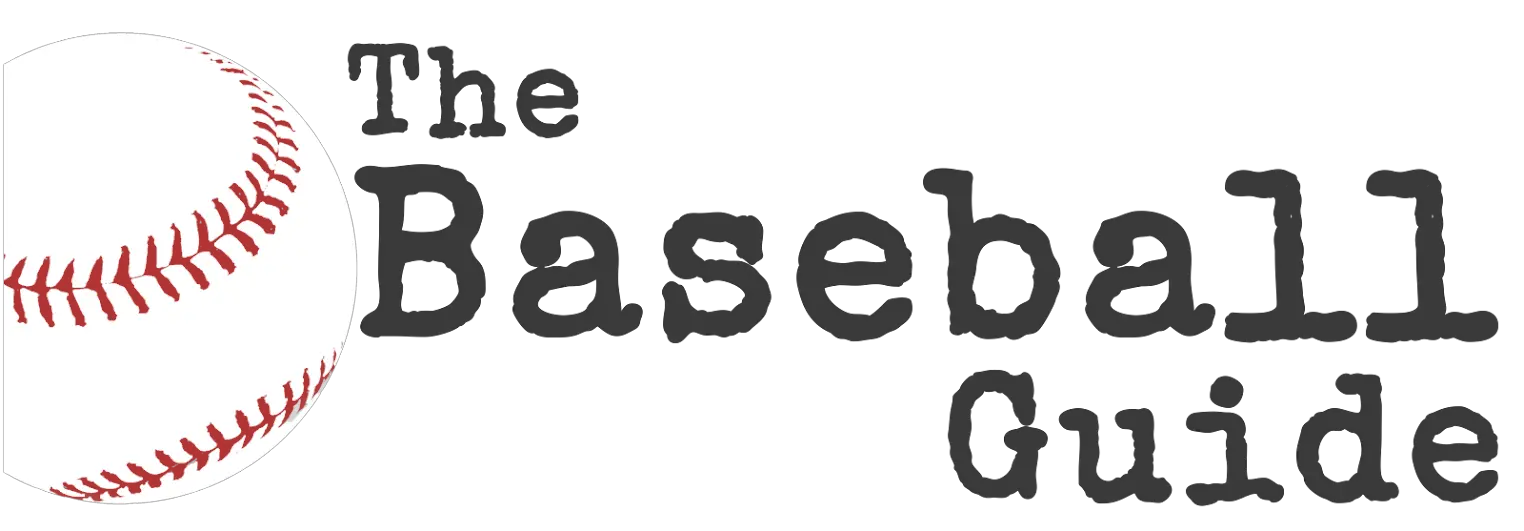If you prefer buying baseball gloves from online stores, then before placing an order, make sure you measure your hand size first for a baseball glove.
But, how do you measure your hand when you don’t have any gloves in your hand?
There are a few easy things that’ll help you to measure your hand size and buy a baseball glove that’ll fit perfectly in your hands.
But, first, let’s talk about the different parts of a baseball glove. So, there won’t be any confusion when you’ll test the actual glove.
However, if you don’t have much time, then you can skip to the main part where I’ve shown the technique of measuring hands as well as a glove.
Different Parts of Baseball Gloves
Just like any other sports equipment, a baseball glove also uses many parts as shown below.
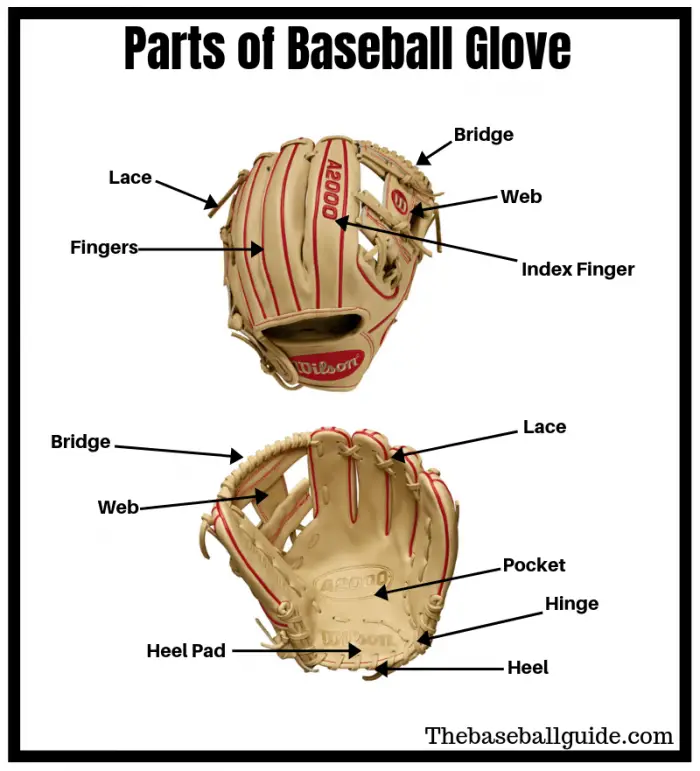
Triangle
It is the area on the pocket or shell, the part of the glove above the palm, where a ball should be incident and remain while the player catches it. These also use leather.
It connects the shell, web crotch, heel pad, little finger pad, and hinge.
Bridge
The bridge is part of the glove which is at the top. Generally made out of leather lacing, it is situated on top of the web.
Web
The web connects the fingers to the thumb with the bridge on top of it. It is made from leather as well and can be produced in various patterns such as H, I, trapeze et cetera. It can also contain two to six pieces of leather.
In addition, there are many different types of webbing styles available in baseball gloves. I’ve written a good short article explaining all the webbing types in gloves and their benefits. It’ll also be helpful to you if you give it a quick read.
The web crotch, on the other hand, is the bottom-most part of the web, where a ball can hit, as it is close to the triangle.
Heel Pad
Made of leather as well, this padding is provided for protection of the lower palm, in case the ball hits the player’s hand there. In particular, this padding in a glove is usually made of two layers of leather, hand-stitched together.
Quality gloves come with two-part pads. As a result, it is easier for the player to flex the glove in the desired manner easily.
Little Finger Pad
This part connects the little finger to the thumb. It is attached to the triangle and shell.
Additionally, plastic reinforcements can be provided to prevent fingers from being damaged by excessive backward bending.
Hinge
The hinge helps to keep the glove tight on the hand and is situated between the little finger pad and heel pad.
Lacing
Given around the glove to protect the corners of the glove, as they are made up of leather. Lacings are usually one continuous piece of rawhide on which stitching is done.
How to Measure a Baseball Glove
Generally, gloves have sizes written on the thumb or little finger, but sometimes, that might not be there. In that case, we have to measure the size manually.
To measure the glove, just take a fabric tape and measure from the top of the index finger, down along the glove, to the center of the heel of the glove, keeping the tape touched with the glove. This will give you the size of the glove.
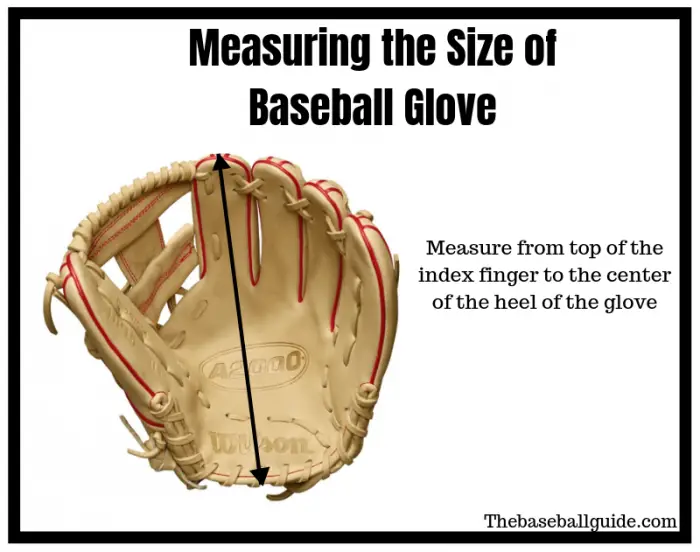
Pro Tip: Keep in mind to convert the units to inches after measurement as standard glove sizes are in inches only.
Watch this video to see how he measures the size of a baseball glove at home.
If you are buying your glove from the store, then take a look at the thumb area of the glove. In most of the gloves, you’ll find the size of the glove written there.
If you’re buying online, then check all the images, if there is an image that is showing the thumb area along with the size mentioned on it.
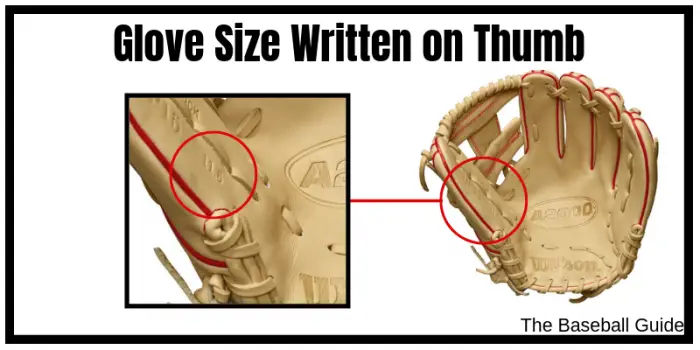
How to Measure a Catcher’s Mitt
Instead of the standard measuring, conversely, we use different criteria for the catcher’s mitts.
These are measured around the circumference of the glove to capture the entire catching area of the mitt, by a flexible measuring tape in inches.
This short video clearly shows how you can measure your catcher’s mitt at home in less than 2 minutes.
How to Measure Your Hand for a Baseball Glove
There are two parameters that can be used to determine the size of a glove you need. Read on to find out what they are and how to measure your hand for getting the optimal size.
The Index Finger Length
Generally, the length of your middle/index finger will be the determining factor for glove size. In most cases, the middle is a little longer than the index finger.
It should also be known that the index finger length is used as the basis for determining glove length.
The average difference between the length of the middle finger and that of the index finger is 0.25”, and if you find that the length of your index finger varies by more than that, then go for a glove that is short by one size.
And which size should you buy?
Of course, you can’t tell by just measuring your index finger. You can not say that “My index finger is 4 inches long, so I’ll buy size 11.50 or 12.” Indeed, it doesn’t work that way.
If your index finger is shorter than the middle finger by 0.25″, then you should go for one size shorter glove.
But, there is no rule.
The size of your glove depends on your position. Watch this video, and you’ll know which glove size is good for Pitcher, Shortstop, Outfielder, Catcher, First Base, and so on.
The Circumference of your Hand
Apart from index finger length, the circumference of a player’s hand is also used for glove sizing.
Hand circumference is the area/region the area of contact between the pointer finger and the small finger on the palm.
You may not necessarily need to measure your hand’s circumference if you are in a sports shop, but if you ordering your gloves online or having them custom-tailored, then this measurement should be included.
If you have thick fingers and palms…
It should come as a matter of no surprise that most baseball and softball players have muscular fingers and palms, hence it can cause problems with tight or over-tight fitting.
In particular, such players should consider using gloves with a ‘stretch’ style and design, which accommodate large palms and fingers comfortably.
Knit textile gloves are more elastic than leather gloves and as such, the former is more stretchable. However, if you want a really good stretching glove, you can never go wrong with the seamless knit ones.
How a Baseball Glove Should Fit
The fitting of a baseball glove is also very important as either tight or loose gloves will make it very uncomfortable for the player to wear.
While buying a glove, if you can test it, make sure that the fitting of the glove is according to your comfort, no rules to be followed here, just make sure that it is tight enough to not slip out while being loose enough to not hinder the blood flow to your hands.
Baseball Gloves Based on your Position
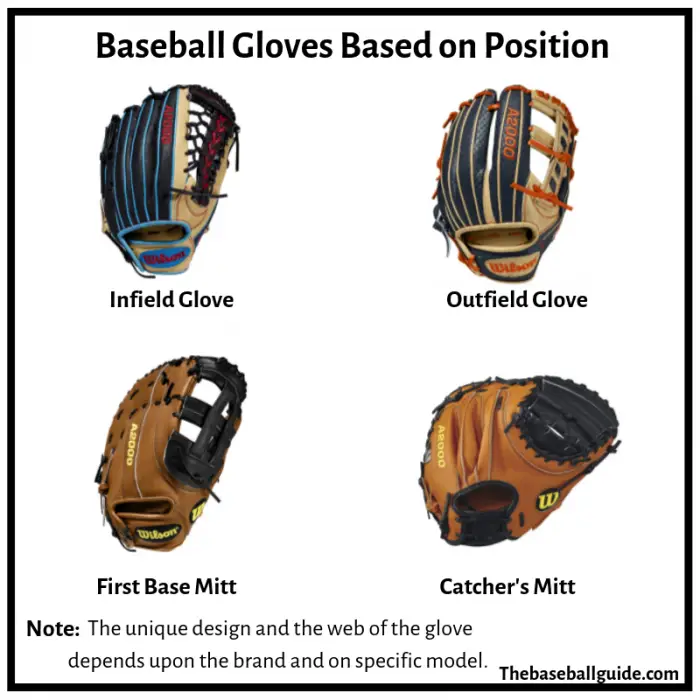
Catcher’s Mitts
These are also called “mitts” because they lack individual fingers, like mittens. Their structural characteristics are that they have extra padding and a hinged, claw-like shape. Due to this, it helps them channel fastballs into the pocket and helps get a good target for pitchers.
Catcher’s mitts also come in the single-hinge and dual-hinge varieties. If required to catch a knuckleball, a catcher will typically use an even larger mitt, and some knuckleball catchers have even experimented with using first baseman’s mitts.
If you want to know more about catcher’s mitts, then you can take a look at another article explaining, what are the best catcher’s mitt available on the market, in which I’ve shared everything about the mitts.
First Baseman’s Mitts
These also lack individual fingers and are generally very long and wide to help them pick or scoop badly thrown balls from infielders.
These are available in 12.5” to 12.75” patterns, measured from the wrist to the tip. And since first basemen are often left-handed, first basemen’s mitts are readily available to fit on the right hand.
Infielders’ Gloves
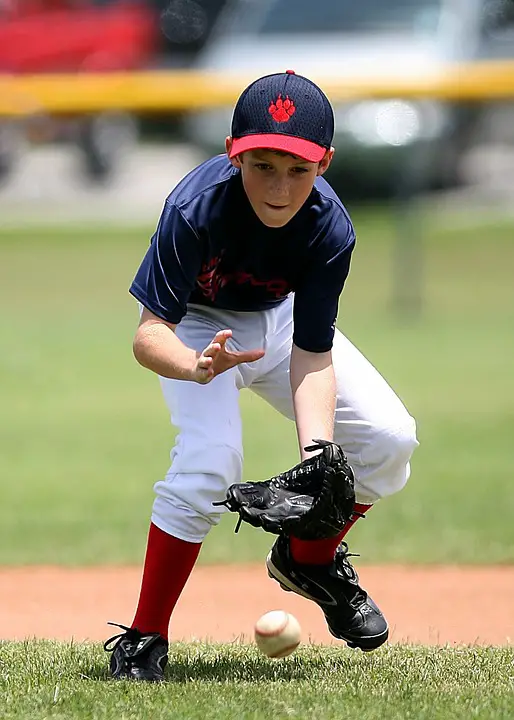
Infielders’ gloves have shallow pockets to allow fielders to remove the ball easily in order to make a quick throw to a base, and unlike the first baseman’s mitt, tend to be smaller.
Often the webbing will be open to allow dirt to move through the glove so that the infielder does not pull out a handful of dirt when trying to remove the ball from the glove. Infielder’s gloves typically have 11- to 12-inch patterns.
Pitchers’ Gloves
Pitchers’ gloves usually have a closed, but opaque webbing to allow pitchers to conceal their grip on the ball, which is necessary, as it can give the batter an idea of the in-flight behavior of the ball.
Generally, these gloves tend to have 11.75- to 12-inch patterns. Infield gloves with intricate webbing are also used, but not often.
If you’re a pitcher, then you should learn more about pitcher gloves because pitching gloves are different from normal infield or outfield gloves.
If you want to know more about baseball pitching gloves, then you can read the attached article.
Outfielder’s Gloves
Generally, these are quite long with deep pockets to help with catching fly balls on the run or in a dive and to keep outfielders from having to bend down as far to field a ground ball.
Measured from the wrist to the tip, these gloves typically have 12- to 12.75-inch patterns. They are frequently worn indifferently from those of infielders, with a flatter squeeze rather than the infielder’s rounded style.
Switch-Thrower’s Gloves
These gloves have a second thumb pocket on the opposite side of the glove, to allow it to be worn on either side of the hand.
These are not used very often.
Left-Hand Throw Gloves
Any of the gloves above, but designed to be worn on the right hand (for left-handed players), will have this attached to their name.
FAQs about measuring hand for baseball gloves
-
How do I measure my hand for a baseball glove if I don’t have any gloves with me?
To measure your hand for a baseball glove, take a fabric tape and measure from the top of your index finger, down along your hand, to the center of your wrist, keeping the tape touched with your hand. This will give you the size of the glove you need. Make sure to convert the units to inches after measurement as standard glove sizes are in inches only.
-
How do I know the size of the baseball glove I want to buy if I don’t find the size written on it?
If you don’t find the size of the baseball glove written on it, you can measure the glove manually with fabric tape. Alternatively, you can check all the images of the glove, especially the thumb area, to see if there is an image that shows the size mentioned on it.
-
What are the different parts of a baseball glove?
A baseball glove has many different parts, including the triangle, bridge, web, web crotch, heel pad, little finger pad, hinge, and lacing. These parts serve different functions, such as protecting the player’s hand and helping to keep the glove tight on the hand.
-
How do I determine the size of a baseball glove I need?
There are two parameters you can use to determine the size of a baseball glove you need: the length of your index finger and the position you play. Generally, the length of your middle/index finger will be the determining factor for glove size, and the position you play will determine the type of glove you need. The average difference between the length of the middle finger and that of the index finger is 0.25 inches. If you find that the length of your index finger varies by more than that, then go for a glove that is short by one size.
-
Why is it important to measure your hand before buying a baseball glove online?
It is important to measure your hand before buying a baseball glove online to ensure that you purchase the correct size glove. Many gloves have their sizes listed on the thumb or little finger, but if they don’t, you can use a fabric tape measure to get an accurate measurement.
-
How can you tell what size baseball glove to buy online?
If you are buying a baseball glove online, you should look at the thumb area of the glove in the product images. In most gloves, you’ll find the size of the glove written there. If you can’t find the size, you can measure your hand using a fabric tape measure and compare it to the sizing chart provided by the manufacturer.
Final Words
So in this article, we discussed in detail sizing, fitting, and types of gloves.
This guide should serve well, in all cases, but it should be especially helpful for aspiring players, who don’t know much about all the terminology and specifics.
I hope that this article helped you to measure your glove and hand so that you can find the best baseball glove for your position, and that’ll fit perfectly.
